About fine rein aids and what helps with learning
Good riding means constant communication between horse and rider. In addition to the weight and thigh aids, the rein aids are the means of communication between the two creatures. These signals can be supplemented by the rider's voice. The rein aids support the driving aids and are always used in conjunction with them.
Riding theory knows five different rein aids:
1. The accepting rein aid
The hand is increasingly closed or turned in. The rider should act delicately and sensitively on the horse's mouth and not pull too hard on the reins. When the reins are accepted, a giving signal is given. If the horse does not yet react as desired, this should be repeated - if necessary several times.
2. The yielding rein aid
By pushing your fists forward slightly, for example: B. the yielding rein aid is carried out when starting to ride. After accepting help with the reins, the hand that was previously turned in is returned to the normal position and thus given way. It is always important not to let the reins sag, but rather to only make small movements and always maintain a slight lean.
3. The protective rein aid
When the horse stands and bends, the rein aid is used on the outside. The inner, setting rein is easily accepted and the outer rein is given a corresponding amount of give. It is important to avoid giving too much of the outer rein because if the rein is too loose or even sagging, the horse will lack external boundaries. It bends in the neck and falls on the outer shoulder.
4. The sideways rein aid
Especially for young horses that still need a lot of support from the rider, the sideways rein aid helps on curved lines and when changing direction. This help can also be used at times during training. The hand moves laterally away from the horse without acting backwards. The change in position of the fist should under no circumstances occur suddenly.
5. The persistent rein aid
The execution of this aid initially corresponds to the acceptance of the rein aid, but without the immediately following yielding. In this case, the rider waits until the horse gives in due to the resulting pressure on the bit. The hand must not be moved backwards. This rein aid is usually only used in exceptional cases and for short periods of time for correction purposes.
Learn to ride without fear: The beginner in equestrian sport
The rider's influence with the reins is a complex topic. Mistakes in handling the reins have a major impact on the quality of riding and unfortunately often occur in the first riding lessons. In order to be able to provide rein aid correctly, the rider's correct posture and movement of his hands and arms is essential.
Most riders start lessons on the lunge. Here the beginner can get used to the new movement situation and learn the correct position without having to control the speed and direction of the horse at the same time. In the first lunge lessons, the students usually have a lot of trouble trying not to lose their balance or even fall despite the horse's dynamic movements. In order to be able to do the sitting exercises without fear in this phase, beginner riders usually hold on with their hands while they are still very unsure. The “old-fashioned” method is to grab the riser strap of the saddle. However, this has a major disadvantage: the position of the saddle strap leads to a too low, covered hand position, too stretched arms and promotes the tendency to sit in a chair and hunched back.
All of these problems are eliminated when using OPTIHAND BASIS . The beginner rider holds on to a sturdy “handle” that is secured by two straps over the front canopy of the saddle. The rider can stabilize himself for as long as necessary and gets used to the correct hand and body position right from the start. The fists are in the correct position, the rider can sit upright and with his elbows bent. The straps can be lengthened as training progresses until the rider sits securely in all gaits without a restraining aid.
Ideally, the reins are only added when the beginner is riding confidently in all basic gaits without having to hold on. This avoids gross motor and sometimes painful effects on the horse's sensitive mouth, especially if the rider loses his balance.
You never stop learning: The advanced rider
For the advanced rider, balance and a seat independent of the reins should no longer be a problem after solid basic training. This makes it all the more important to work on the influence and good communication between rider and horse. A very important aspect when correcting the rider's seat is the hand and arm position in order to be able to give the rein aids correctly and sensitively.
The rein aids are only intended to complement the weight and thigh aids, but as very hand-oriented creatures, riders often use their reins far too intensively. This problem can be found at every level of education. However, acting too strongly, unevenly, jerkily or in the wrong direction is very unpleasant or even painful for the horse in the sensitive mouth and head area.
As with learning any sport, as your skill level increases, it becomes more important to work on the finer details. When riding, the aim should be to ride with a steady and light hand. The different rein aids described above are ideally very small, barely noticeable movements.
In reality, only a few experts achieve this perfection. Many riders therefore want to improve their hand control. With OPTIHAND EVOLUTION, problems with the rider's hand are exposed very quickly and effectively. With this tool, the rider feels what the reins should feel like. The turning of the fists when accepting the reins is illustrated by rotating handles. OPTIHAND EVOLUTION provides a calm, even control of the reins and the desired raised fists. This allows the rider to feel the correct movement pattern and at the same time observe the happier cooperation of his horse. The tool is most usefully used specifically to solve problems during riding lessons and is of course not intended for long-term use.
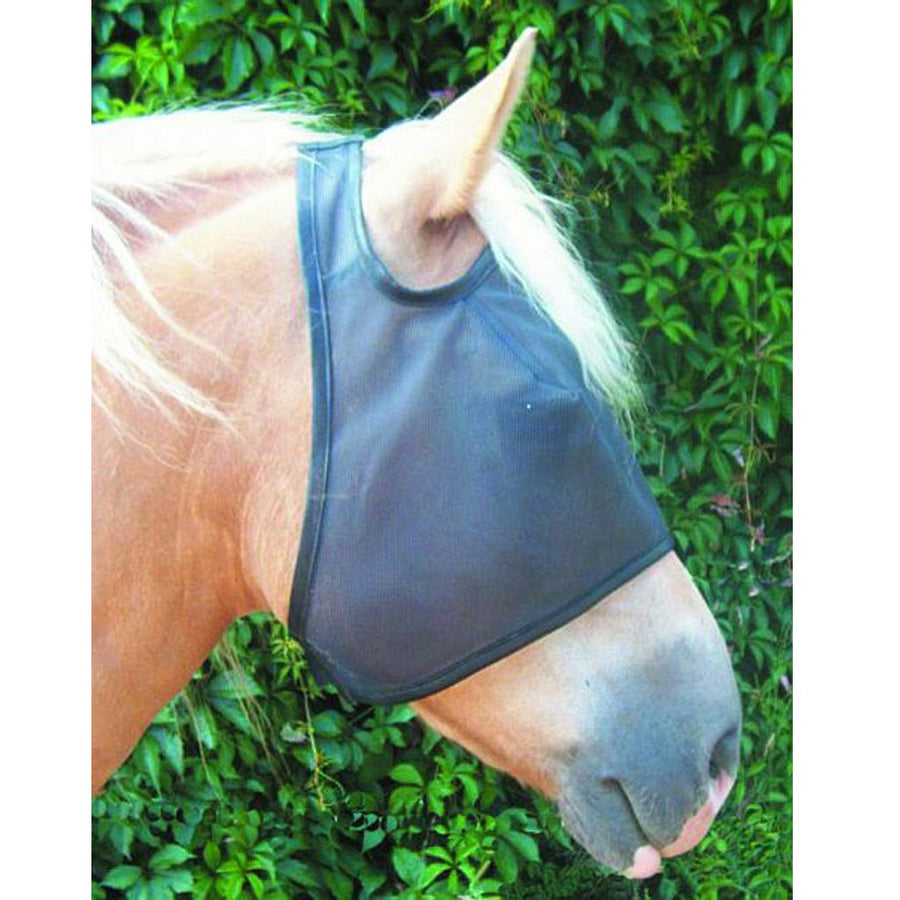
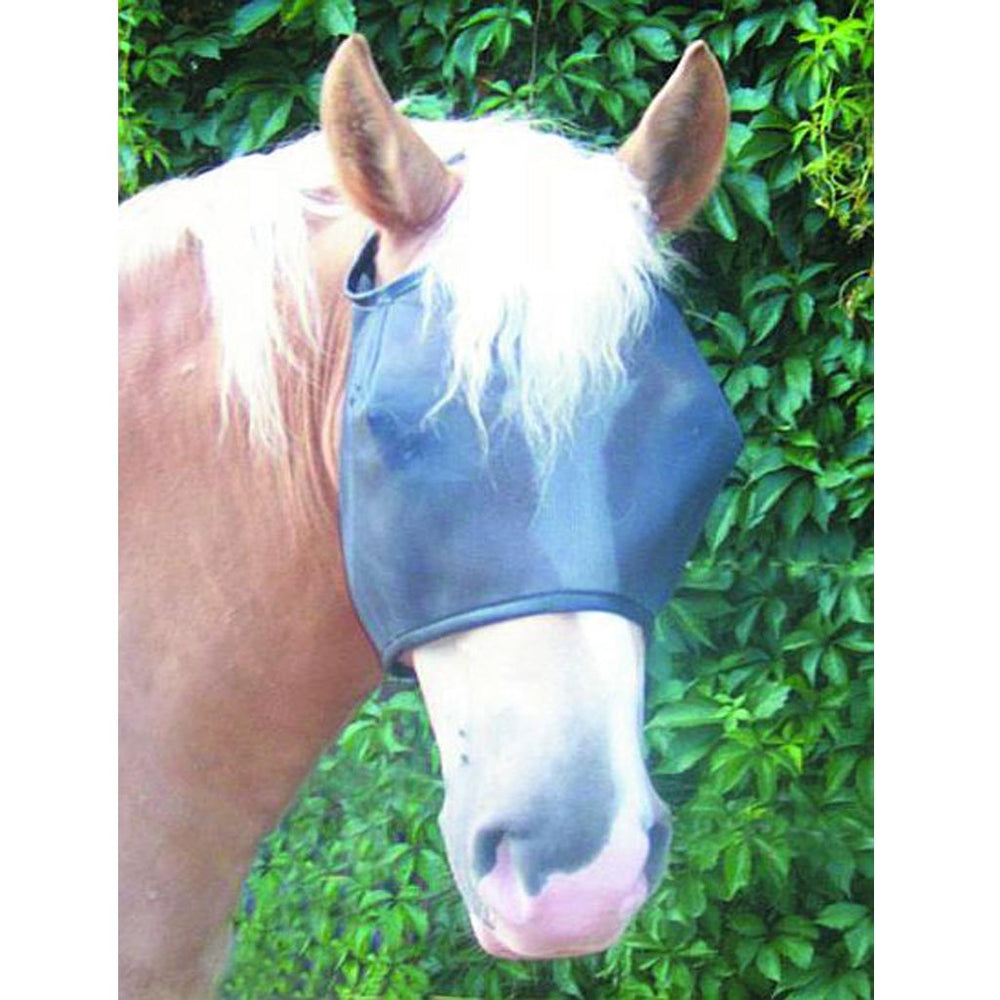
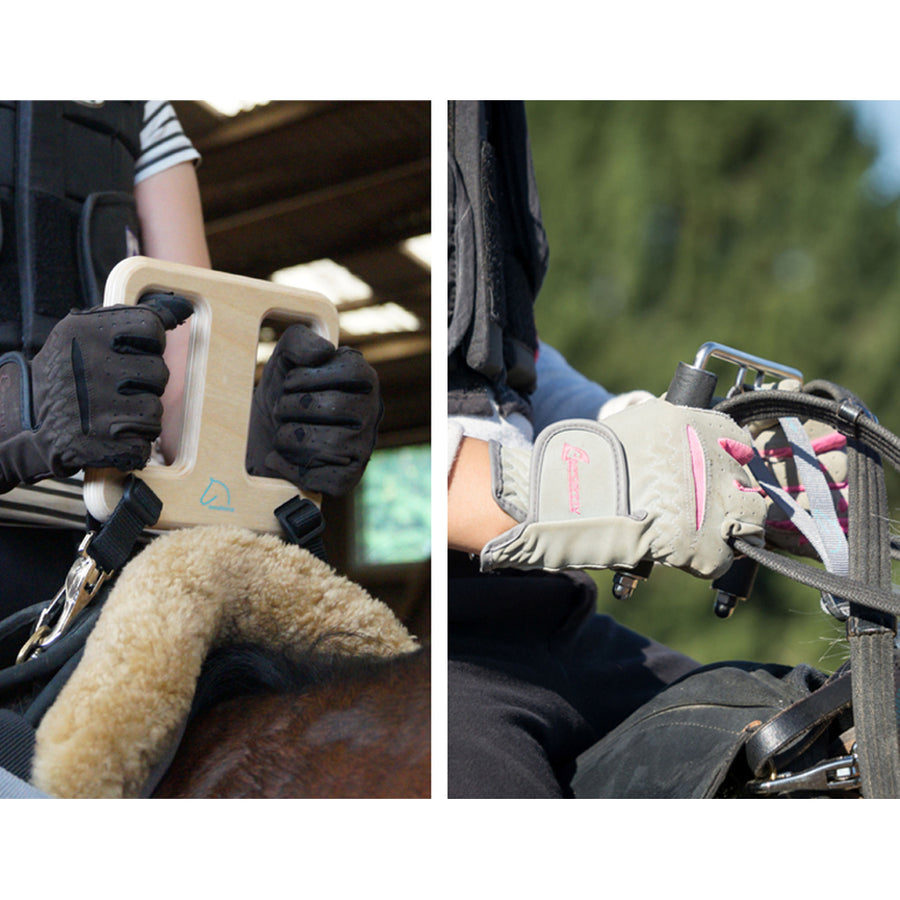
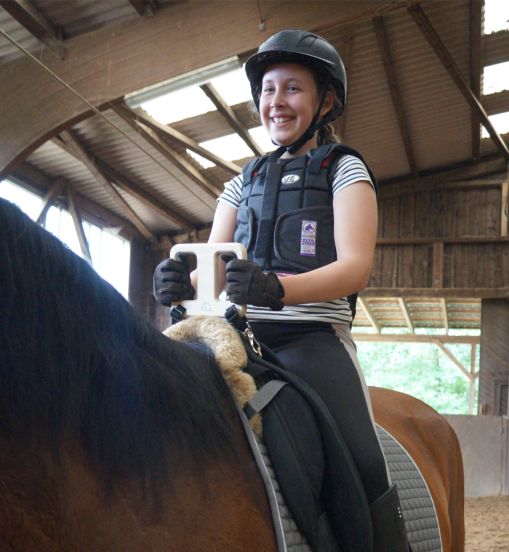
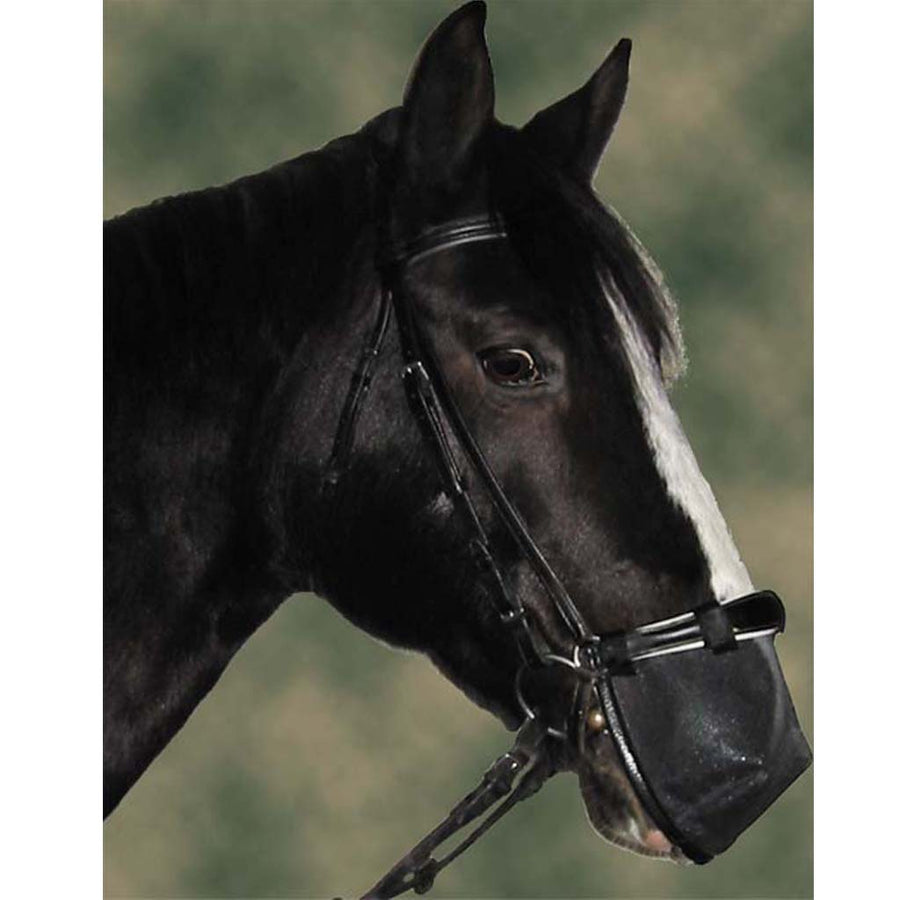

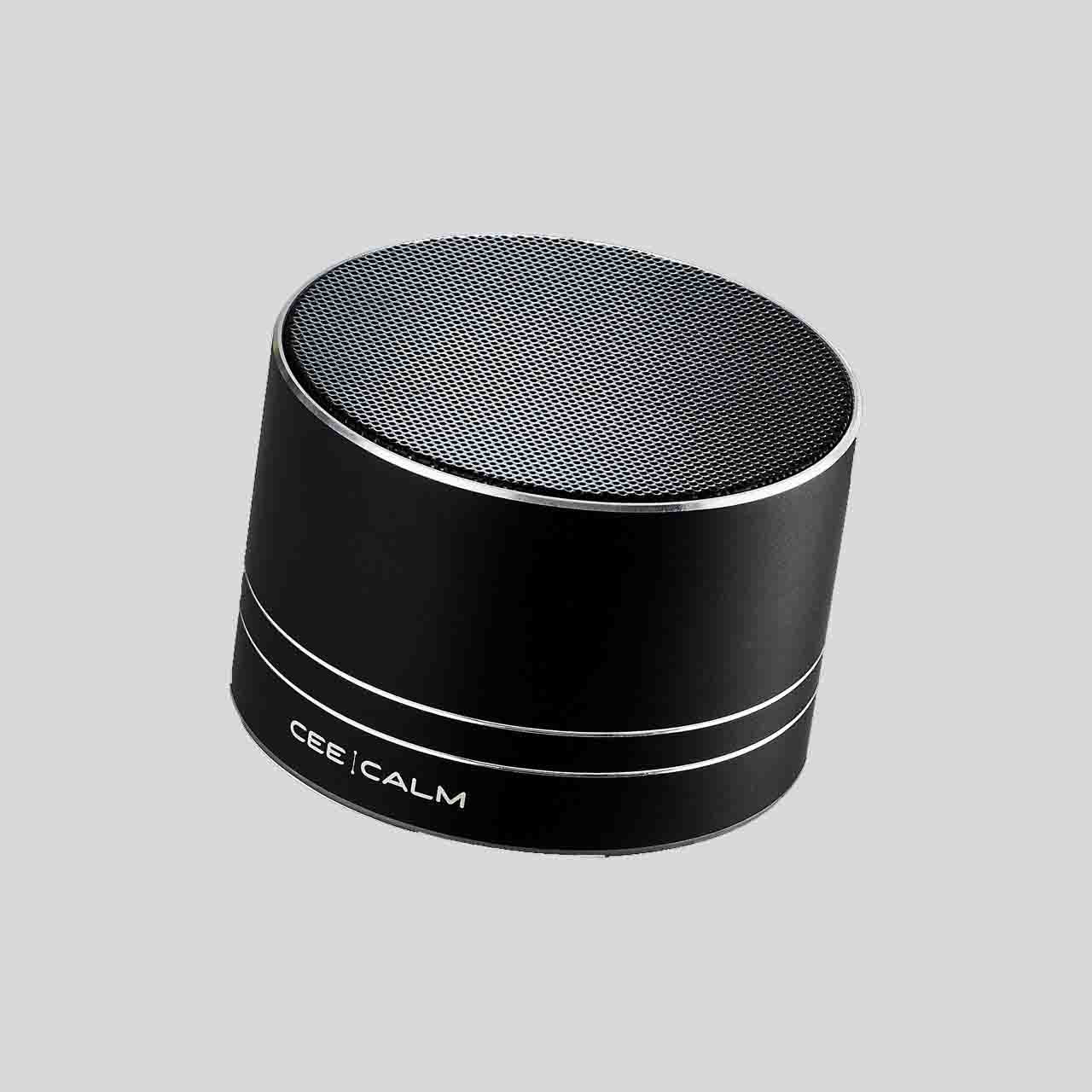


Write a comment